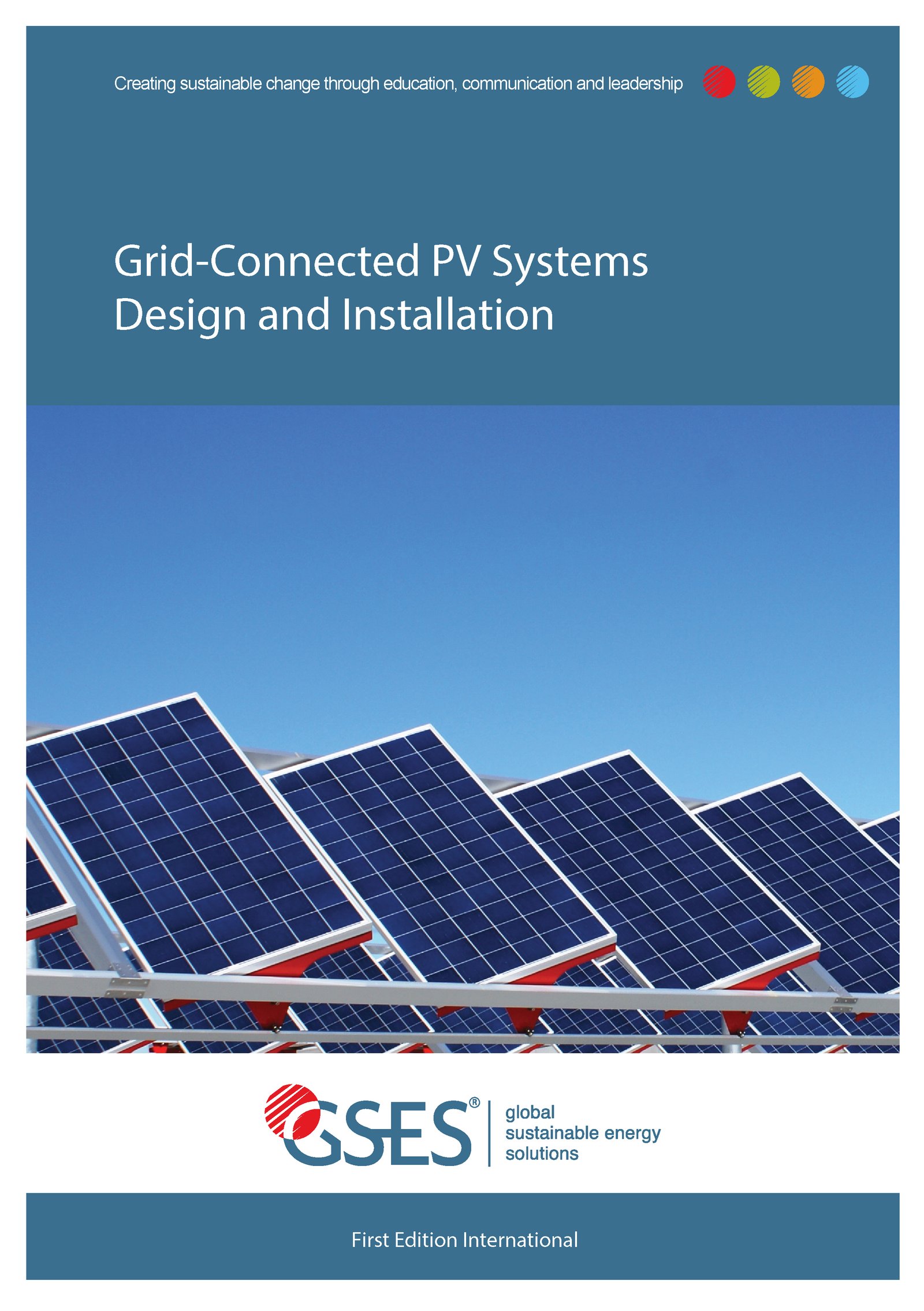PublicationsBooksPublicationsThis comprehensive training handbook provides detailed technical information and step-by-step methodology for designing a grid-connected photovoltaic (PV) system in various regions of the world with relevant international standards. The book covers the fundamentals of solar PV systems, the different components required and the need to match them, and how to size a system for optimum production. It also includes methods for conducting site surveys of potential installations, system installation, troubleshooting, maintenance and the economics of grid-connected PV systems. The handbook is designed around relevant international standards relating to grid-connected solar systems. This International edition is intended for countries in Europe, Asia, Africa and the Pacific, and contains references to International Standards and best practice throughout.
You can purchase a copy of the Grid-Connected PV Systems: Design and Installation First International Version handbook in our online GSES Shop.

The training handbook has 20 chapters presented so that trainees learn and practice all aspects of designing grid-connected solar systems according to international standards. Topics contain illustrative reading materials, worked examples for study, and exercises for practice.
Table of Contents
- Workplace Health & Safety (WH&S)
- DC Electricity
- Solar Radiation
- Understanding Photovoltaics (Solar Cells)
- Connecting to the Grid (AC Electricity)
- PV Modules
- Inverters
- Mounting Systems
- Balance of System Equipment
- Energy Assessment
- Site Assessment
- Matching Array and Inverter
- System Protection
- Cable Design
- System Efficiency and Yield
- System Installation
- System Commissioning
- System Maintenance and Troubleshooting
- Economics of a Grid-Connected PV System
- Commercial and Utility-scale PV Systems
Book Description
The first few chapters of the book are designed to help readers understand the workplace health and safety procedures, and basic fundamentals of PV installation. These include solar irradiation, peak sun hours, sun-path diagrams, the position of the sun, solar altitude, DC electricity, types and characteristics of solar cells, like power characteristics, performance, electrical protection and reliability issues, are discussed in detail, providing essential engineering and scientific knowledge to the designers. Also, geometric effects, tilting solar modules, electrical integration of PV modules (AC Electricity) and configuration of the array are also thoroughly discussed further in the handbook. There is also a topic on inverters, which covers different types of inverter, efficiencies, protection systems, power quality, monitoring and selection.
The highly illustrative topic on mounting structures covers different types of mounting systems suitable for different types of roofing and ground material, PV array row spacing and calculating wind loading for solar arrays in different regions of the world with relevant international standards.
The handbook also covers designing, selecting and balancing system components, including DC and AC cabling, protection and disconnection switches (fuses, isolators and/or circuit breakers), lightning protection, PV array DC and inverter AC isolators, metering and system monitoring devices.
Step-by-step procedures are provided for successfully undertaking a site assessment to determine energy-efficient initiatives, workplace health and safety risks, solar radiation and shading, how the PV modules will be mounted, and positioning of inverters.
Matching of array and inverter is of the utmost importance for better performance of a grid-connected PV system. The designer needs to ensure that these components match in terms of voltage, current and power during seasonal changes in the operating temperature of the solar array. The handbook covers this aspect with several working examples and case studies.
The book also covers the forms of protection used within a PV array, the method of determining whether fault current protection is required and the sizing of fault current protection. Similarly, sizing and selection of DC and AC cabling is also explained, with several working examples.
Detailed instructions are provided for designing the cable layout taking into consideration all safety and risk factors along with keeping the cost of cabling in mind.
For evaluating the energy yield and performance ratio of a PV system, it is important to consider losses from various different factors, including temperature, soiling, shading, manufacturer’s tolerance, voltage drop through AC and DC cabling, inverter, tilt and orientation of the solar modules.
Furthermore, steps and proper methods are provided for successful and accurate installation of the PV solar system and various steps for commissioning the system.
Every system needs maintenance and sometimes troubleshooting in case low energy yield or less generation, therefore procedures for temporary shutting down, safely working, and minimizing the risk factors are provided to ensure risk less maintenance and troubleshooting of the solar PV system
The book also contains a chapter to calculate and estimate the cost of the solar PV system and its return in terms of energy generated and energy feed-in grid and thus it helps the designers estimate a period of time for return of investment.

